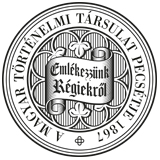Századok – 2005
TANULMÁNYOK - Dominkovits Péter: A rendi jogok védelmezője - a központi utasítások végrehajtója: a 17. századi magyar vármegye 855
888 DOMINKOVITS PÉTER észak-magyarországi törvényhatóságok életében. A 17. századi vármegye Janus-arcúságának időben és térben differenciált bemutatásához további alapkutatások szükségesek, melyekhez elengedhetetlen a megyét illető kormányzati politika bemutatása is. De míg a Habsburg abszolutizmus magyarországi várospolitikájáról, a felső-magyarországi városszövetségre koncentrálva, a közelmúltban mintaadó feldolgozás látott napvilágot, mely munka a vármegyék politikai, országgyűlési megítélésének változását is a vizsgált problémakörben figyelemmel kísérte (pl. a 16. századi tendenciákkal ellentétben, ekkor az országos törvényalkotásban a városokkal szemben a megyei rendiség súlya nőtt)160 -a Habsurg kormányzat, illetve az erdélyi fejedelmek megyékkel szembeni politikája még feldolgozásra vár. THE HUNGARIAN COUNTY IN THE 17TM CENTURY: DEFENDER OF NOBLE RIGHTS OR EXECUTOR OF CENTRAL ORDERS? by Péter Dominkovits Summary Thanks to the works of politicians of the Reform Era and to the political history of the period the Hungarian county of the 16t h to 19t h centuries, an essentialy legal and administrative organisation, is generally depicted as an institution which defended the rights and local interests of the provincial nobility against the central authority. Such image of the county as a defensive institution of the nobility was reflected back to the earlier centuries. The present study, adopting a different approach, tries to analyse the working of the early modern county by taking account of contemporary geographical and social peculiarities. Following a brief historiographical introduction the author examines the functions and the personnel of the early modern county as well as its relationship to Habsburg absolutism, and then offers a case study of the county of Sopron. In the 17th century the county of Sopron carried out public and legal functions (maintenance of roads, regulation of waterways and mills, protection of river crossings, securing local order, jurisdiction, inquisitions), and thereby organised local society as well as stabilised the hinterland of the border castles. The military functions of the county were normally limited to transport to and free construction work in the nearest border castles (such as Pápa), which contributed to the strengthening of the system of castles opposing the Ottoman territories. The general and partial levies of the nobility, always of dubious quality, provided the counties with a limited role in the tentorial defence, and they also took part in the accomodation and provisioning of the imperial forces garrisoned on or marching through their territory. The internal relations of the counties are still very vaguely known. Until 1671 the power relations within the county of Sopron were characterised by a certain bipolarity caused by the rivality between members of the Nádasdy family (such as counts Pál and Ferenc) on the one hand and the appointed leaders of the county (counts Ferenc Batthyány, Miklós and László Esterházy) on the other for local power and influence. The comital offices, before all on the level of the deputy counts (vicecomites) and the county magistrates {judices nobilium) were filled by members of the respective groups of retainers (familiares) according to the turns of this political strife. After the execution of count Ferenc Nádasdy, accused of high treason, the former bipolarity ceased to exist, for count Pál Esterházy as count of Sopron gradually integrated the former leading retainers of the Nádasdy (members of the Felsőbüky Nagy, Tolnay and Zeke families) into his own following. This part of the study also deals with the county officers, with a special emphasis on persons acting as notaries in several counties simultaneously. The last part of the study gives evidence on the envoys of Sopron county to the parliament and indicates some possibilities of further research. It also draws attention to the cooperation of the Transdanubian counties in the 17th century, thereby emphasising the importance of the analysis of the role of the county in regional and national politics.
